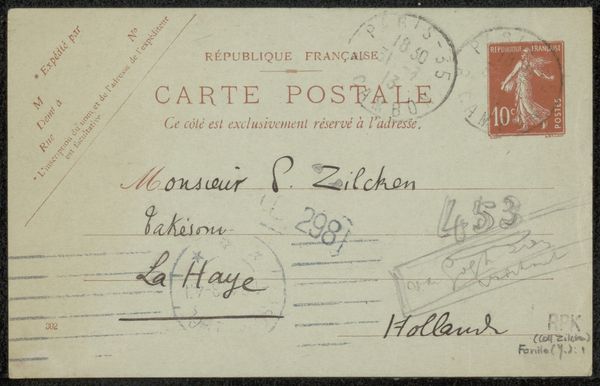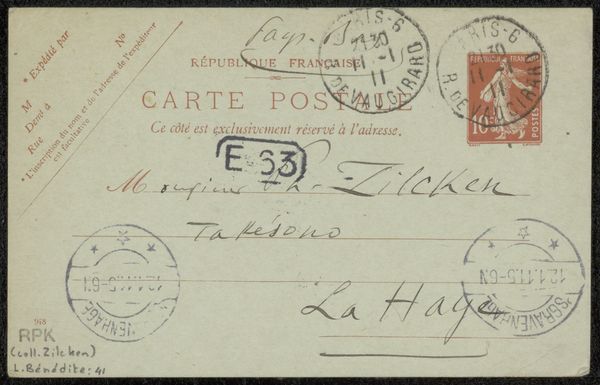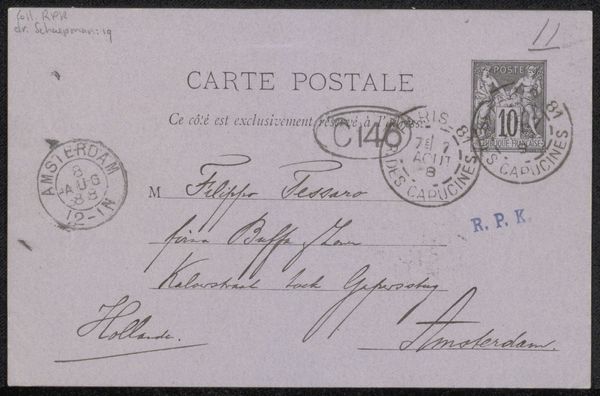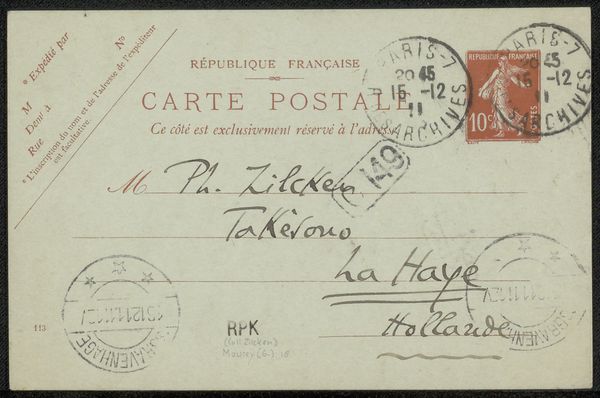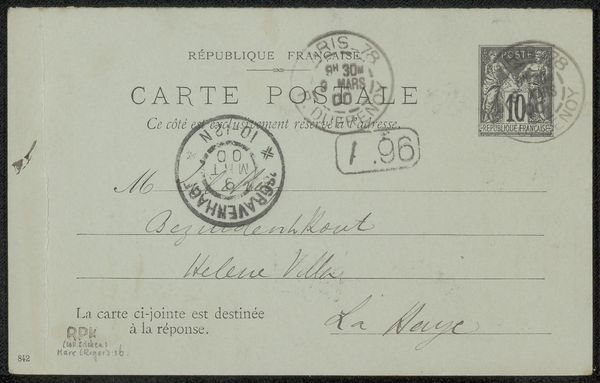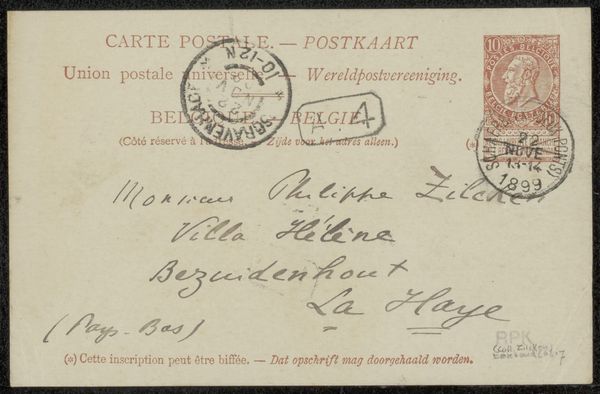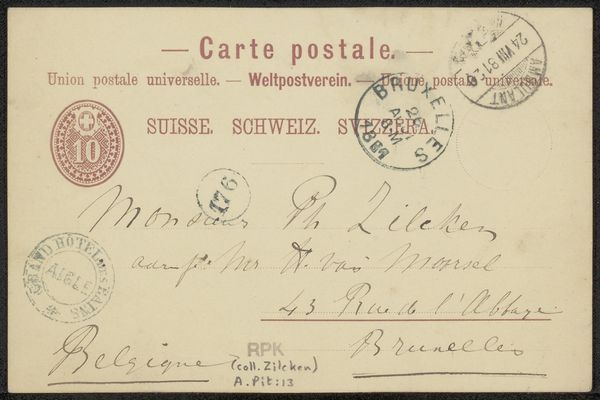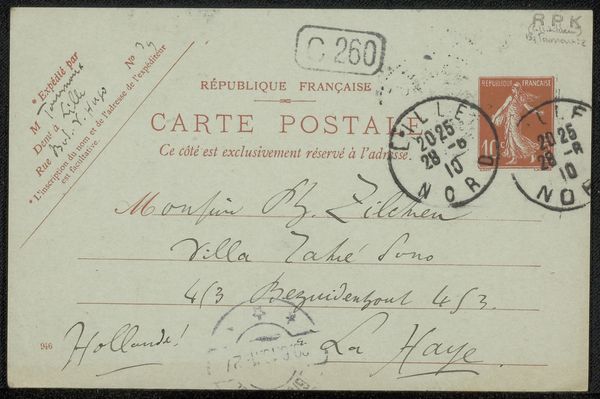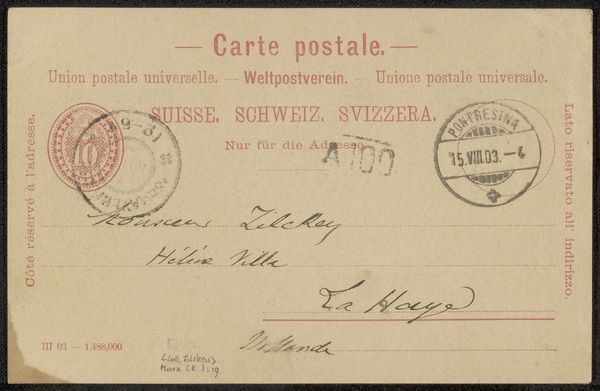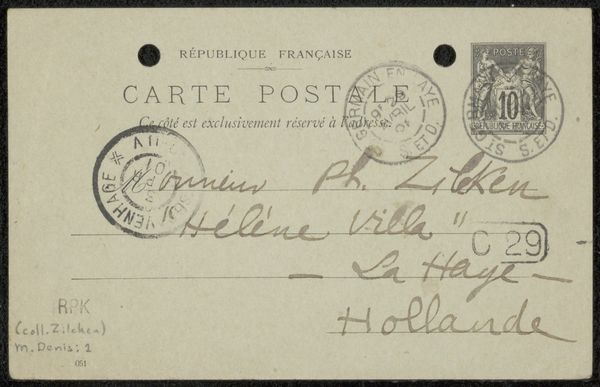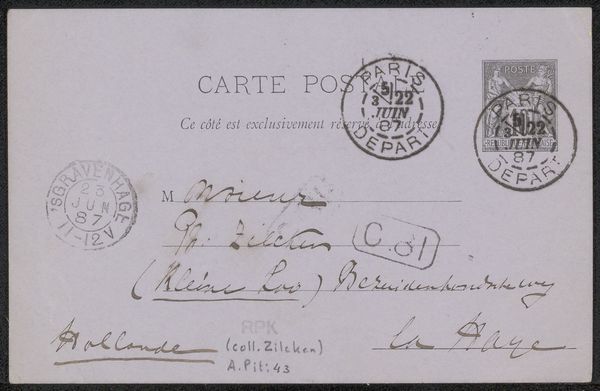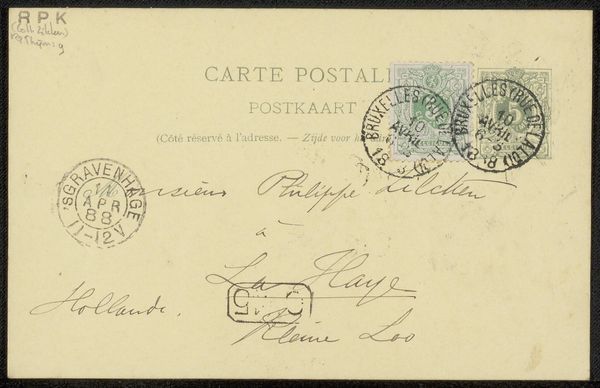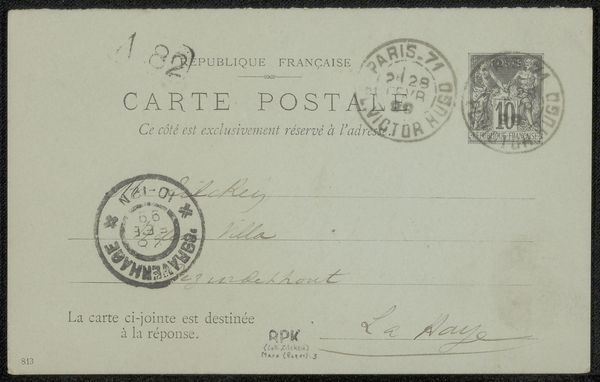
drawing, photography, ink, pen
#
drawing
#
hand-lettering
#
hand drawn type
#
hand lettering
#
photography
#
personal sketchbook
#
ink
#
hand-drawn typeface
#
ink drawing experimentation
#
pen work
#
sketchbook drawing
#
pen
#
storyboard and sketchbook work
#
post-impressionism
#
sketchbook art
Copyright: Rijks Museum: Open Domain
Editor: This is a postcard, "Briefkaart aan Philip Zilcken," possibly from 1906, author is François Courboin. The media listed include photography and ink, pen. It's just a simple postcard, but the handwritten address is really striking. What stands out to you? Curator: It is seemingly a simple card, but I’m immediately drawn to considering it as a social document of its time, and also, potentially, a study in power dynamics, and the rise of nationalist sentiment. The postal markings declare the "République Française," hinting at the increasing assertion of national identity of the time. Think about who had the privilege of sending and receiving mail then. Editor: That's interesting. I hadn't thought about it that way. It just looked like someone's mail to me. Curator: Exactly, what we are accustomed to hardly ever is just ‘someone's mail.' What about the recipient, Philip Zilcken, and his location in La Haye - or The Hague? Could we consider the political implications of communication between France and the Netherlands in the early 20th century? The text itself becomes a site of interaction, connecting individual lives with larger geopolitical forces. Editor: So, even a simple postcard is like a little time capsule of political and social history? Curator: Precisely. Art, even in this humble form, invites us to consider not only aesthetics but also the embedded narratives of identity, power, and cultural exchange. Are there visual cues suggesting social status, class, or profession? How might these factors play a role in someone's perception of the card back then and ours now? Editor: I never would have looked at it that deeply on my own, I thought it was simply a nice handwriting and the stamp, I will try to think about the sociopolitical implications. Thank you! Curator: You're most welcome! Now you know a good next step for understanding it is situating it within its historical moment, connecting personal expression with larger cultural movements.
Comments
No comments
Be the first to comment and join the conversation on the ultimate creative platform.
